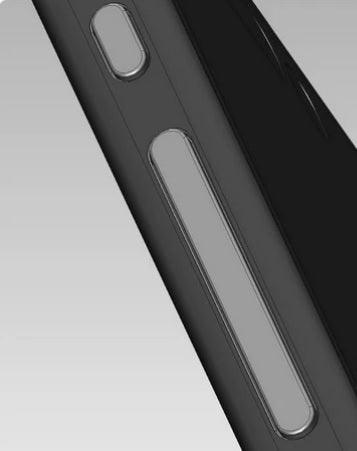Solid-state buttons on iPhone reportedly coming next year
As we’ve already noted, the premium iPhone 15 models (the iPhone 15 Pro and the iPhone 15 Ultra) will not have the solid-state haptic buttons replacing the mechanical, physical buttons that iPhone users are extremely familiar with. After being rumored for several months, last month TF International’s Ming-Chi Kuo and Haitong Tech’s Jeff Pu, two well-known Apple analysts, both said that the solid-state buttons were not “a thing” for this year’s pricier iPhone units.

Render shows the solid-state volume bar on an iPhone 15 Pro model
This tipster, who as we pointed out last month does not have the reputation that Kuo has, wrote that it is too late for Apple to give up on the solid-state buttons. He wrote that the iPhone 15 Pro models “will still have capacitive touch buttons; contrary to rumors, the development team is working too closely with new hardware to turn back now.” As for Gurman, he has been told that Apple will include the feature next year.
Based on renders, the haptic button would be one long single bar on the side of the iPhone. The user would tap the top part of the button to raise the volume and the lower part to decrease the volume. When the button is pressed, the user would get a haptic response to simulate the pressing of a button. The solid-state bars would not be subject to wear like physical buttons are and might have made the iPhone more water-resistant since the holes required for a physical button wouldn’t be needed.
For all the latest Technology News Click Here
For the latest news and updates, follow us on Google News.

